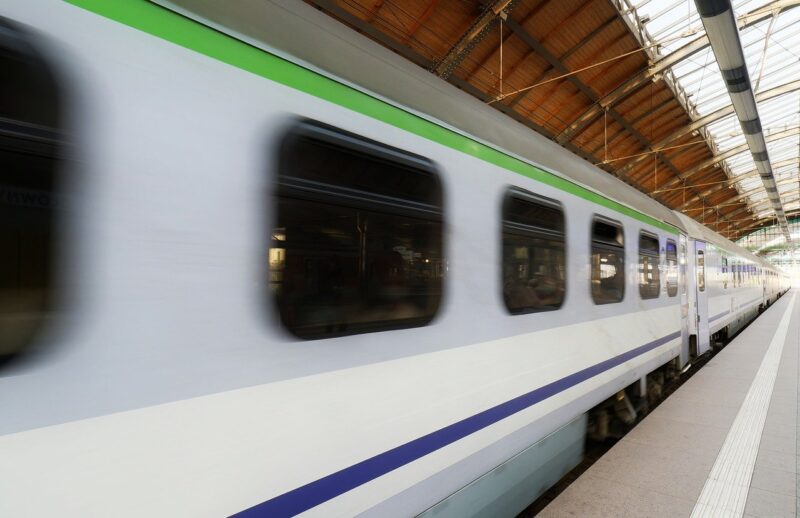How Public Transport Innovations Help Address Accessibility Challenges
November 15, 2024

Public transport serves as the backbone of urban mobility, connecting people to jobs, services, and activities across cities. However, many transportation systems continue to present significant accessibility challenges for individuals with disabilities, the elderly, and others with limited mobility. Fortunately, ongoing innovations in technology and design are beginning to address these challenges, making public transport more inclusive for everyone.
1. Understanding Accessibility Challenges in Public Transport
Accessibility in public transport refers to how well transport systems accommodate the needs of all users. Although various legislation and frameworks exist to promote accessibility, many users still encounter obstacles, including:
- Physical Barriers: Lack of ramps, elevators, and proper seating can hinder access for those using wheelchairs or other mobility devices.
- Information Barriers: Inaccessible or confusing signage and announcements can deter visually impaired individuals or those with cognitive disabilities from navigating transport systems effectively.
- Financial Barriers: Public transport fare structures can disproportionately affect low-income individuals with disabilities, limiting their access to mobility options.
With the goal of providing equitable mobility for all, the following public transport innovations are being implemented globally to enhance accessibility.
2. Innovative Technologies in Public Transport
Recent technological advancements are helping create smarter and more accessible transportation systems. Here are a few notable innovations:
- Mobile Apps: Applications like Transit, Moovit, and Citymapper are enhancing the user experience by providing real-time information about public transport options, including accessible routes and services, and estimated arrival times. These apps include features that allow users to filter results based on accessibility criteria, providing tailored options for those with mobility challenges.
- Automated Vehicles: Autonomous vehicles are emerging as a potential solution to fill gaps in public transport, especially in underserved areas. These vehicles can be designed with accessibility in mind—featuring ramps, spacious interiors, and voice-command systems for ease of use.
- Smart Destinations and Geo-Fencing: Geofencing technology is being employed by public transit agencies to create designated pickup and drop-off points where accessible shuttles operate periodically. This can provide on-demand service for those with limited access while ensuring they are not stranded in areas without regular transport service.
These innovations not only enhance convenience but also promote independence among users who might otherwise feel reliant on others for mobility.
3. Infrastructure Improvements for Accessibility
Enhancing infrastructure is crucial in making public transport systems more accessible. Key improvements include:
- Platform Elevators and Ramps: Installing accessible ramps and elevators at stations can ease access for individuals using wheelchairs, walkers, or strollers. Many cities, such as New York, have committed to increasing the number of accessible stations through significant investment in infrastructure upgrades.
- Improved Station Signage: Clear and accessible signage—utilizing braille, large print, and contrasting colors—can help users navigate transport systems more effectively. Many cities are adopting universal design principles that consider the needs of everyone, regardless of their abilities.
- Accessible Ticketing and Fare Payment Systems: Developing user-friendly ticketing systems that accommodate those with disabilities is essential. This includes kiosks that feature audio output, large buttons, and touchscreen options that are intuitive and easy to manipulate.
By fostering an environment that prioritizes accessibility in infrastructure design, public transport becomes truly inclusive.
4. Enhancing User Experience Through Inclusive Design
Promoting a more inclusive public transport experience is also about rethinking design:
- Vehicle Accessibility: Buses and trains are being designed or modified to include low-floor entry for easier access, designated spaces for wheelchairs, and systems to accommodate auditory and visual impairments. For instance, many city buses now come equipped with ramps that deploy automatically, ensuring a smoother transition between the curb and the bus interior.
- Inclusive Training for Staff: Training transit staff on how to assist individuals with various disabilities can significantly enhance the user experience. This training includes understanding different disabilities, how to provide assistance, and how to communicate effectively with passengers who may have difficulty expressing their needs.
- Public Feedback Mechanisms: Establishing channels for feedback from users with disabilities ensures that public transport systems can continually innovate and improve. By understanding the experiences of those who rely on public transport, authorities can implement changes that genuinely meet user needs. Many cities have begun to involve citizens in participatory design processes, allowing community members to have their voices heard in transport planning initiatives.
Direct user input is invaluable for effectively tackling accessibility challenges and improving the overall experience.
5. Case Studies: Cities Leading the Way
Several cities around the world are setting the standard in public transport accessibility:
- London: London’s Transport for London (TfL) has implemented a wide range of accessibility initiatives—including step-free access at stations and audio announcements on buses. They also engage regularly with access groups to refine services.
- San Francisco: San Francisco has pioneered both electric trolley buses equipped with ramps and a citywide shuttle program that prioritizes access for seniors and individuals with disabilities. Their efforts help to reduce inequities in access to transport across diverse communities.
- Melbourne: Melbourne is leveraging technology and innovative designs to create accessible tram routes, providing users with information through a well-integrated mobile app that caters specifically to their needs. Their focus on collaboration with local disability advocacy groups promotes inclusive development further.
These examples highlight not only the necessity of accessibility measures but also their feasibility with proper investment and commitment from public authorities.
Conclusion: A Future of Inclusive Public Transport
As urban populations continue to grow, ensuring that public transport systems are accessible is essential for social equity and mobility. By implementing innovative technologies, improving infrastructure, enhancing user experience, and learning from global leaders, cities can make significant strides in meeting the mobility needs of everyone, regardless of their physical abilities.
The journey toward accessibility in public transport is ongoing. With continued advocacy, thoughtful design, and community involvement, the public transport landscape can shift toward greater inclusion, demonstrating that accessibility is not merely an add-on but a vital component of a modern and equitable society.







